To Innovate Your HR Department, Take a Page From the IT Manual
Posted on July 10th, 2018 Read time: 4 minutes

Agile is probably not the first word you would use to describe the traditional model for hiring and staffing your organization. Typically, human resources departments hire candidates for defined roles with rigid criteria for lateral moves or promotions. But ignoring the agile approach hinders organizations from responding quickly to their constantly evolving needs.
Today’s companies are in constant flux, strategically developing and redeveloping to keep up with the pace of business. This flexibility requires a forward-thinking workforce that can apply its talents to various projects and move seamlessly between teams. As such, HR teams should integrate agile strategies into workforce planning so their organizations can react and adapt as necessary.
How to Apply Agile Principles to HR
The tech industry crafted the agile approach to develop better software more quickly. It’s a mindset that boosts adaptability by prioritizing customer needs, collaboration, and product quality rather than following any one process out of habit. These values apply to any industry and, most importantly, align with HR’s goals.
Some companies have already put these tactics to use organically. For example, a friend of mine began to notice her company shifting her role when her skill set suited a new project. This is a great example of the new way HR professionals should handle staffing.
You can use several agile principles during the hiring and staffing processes to create a more flexible workplace structure. Just follow these four steps:
1. Ditch the rigid roles.
HR has clung to inflexible job descriptions for too long. Instead, start building projects around your people rather than confining them to a role.
Put this into practice by drafting hiring criteria based on core competencies that lend themselves to agility. Focus on identifying nimble employees who have the necessary attributes and skills, as well as the desire to learn and the ability to manage ambiguity.
ING adopted this approach by reinterviewing nearly 3,500 employees for their current positions. The insight they gained into their workers’ skill sets allowed them to make rehiring decisions based on alignment between the company’s mindset and the individual. But don’t think you have to completely overhaul your company to improve agility; just incorporate agile practices into the hiring process.
2. Strive for simplicity.
Agility emphasizes the importance of simplicity, something HR struggles with. The need to follow procedures and attain compliance from everyone involved frequently hinders quick action. For example, if a manager is bullying his employees, HR typically needs thorough documentation to make the case to terminate him.
A bad manager can disrupt a team, stop productivity, and hurt business, all leading to a negative company culture. So practicing simplicity, in this case, empowers HR to protect employees and the company above all else. Of course, you have to weigh the respective risks of each action, but simplicity allows you to rely on common sense in addition to factual evidence.
3. Build self-organizing teams.
In traditional organizational structures, department heads report to a president. But this might not suit your company. HR has the opportunity to foster increased agility by instituting cross-functional, self-organizing teams.
Innovative Employee Solutions put this into action by developing employee-driven innovative teams, cross-functional teams that collaborate to find solutions for specific issues. We have found that this system spurs employees to find creative approaches to age-old business problems.
Bain & Co. research found that effective collaboration correlates with success at top corporations. In fact, these companies spend 50 percent less time on ineffective or unnecessary collaboration. Small teams can address mission-critical issues faster than large ones. This structure creates clear communication, operational efficiency, and employee engagement.
4. Welcome change.
One of the biggest challenges organizations face is embracing change. According to an Accenture report, more than 50 percent of nearly 700 executives expressed concerns regarding their companies’ ability to adapt quickly to market shifts. HR, in particular, can get a reputation for being resistant or slow to change.
HR has an opportunity to hire agile, flexible employees who perform well with ambiguity and change. Change isn’t easy; actually, it’s hard and uncomfortable. But having a fixed mindset that change is always negative will make confronting it even harder. Alternatively, a growth mindset, in which change is embraced through learning and development, produces much better results.
You can pinpoint a candidate’s mindset during an interview by asking behavioral questions. Set a precedent by presenting candidates with the company’s vision and the expectations for agile, nimble employees. Then, create flexible job descriptions that allow room for change to meet business needs.
Agility isn’t just a principle for software development; it’s an applicable mindset to help companies adapt and change across departments. And the agile method of hiring and running your department is becoming increasingly necessary to keep up with the competition. The key is to find employees with growth mindsets and give them flexible conditions to foster collaboration and personal development.
Published By: HR.com
By: Jennifer Maynard, Human Resources Manager
Jennifer Maynard is a human resources manager at Innovative Employee Solutions (IES), a leading nationwide employer of record that specializes in payrolling and contractor management services for today’s contingent workforce. Founded in 1974 in San Diego, IES has grown into one of the city’s largest women-owned businesses and been named one of its “Best Places to Work” for 10 years in a row.
Related Articles
Posted on July 10th, 2018 Read time: 4 minutes

Agile is probably not the first word you would use to describe the traditional model for hiring and staffing your organization. Typically, human resources departments hire candidates for defined roles with rigid criteria for lateral moves or promotions. But ignoring the agile approach hinders organizations from responding quickly to their constantly evolving needs.
Today’s companies are in constant flux, strategically developing and redeveloping to keep up with the pace of business. This flexibility requires a forward-thinking workforce that can apply its talents to various projects and move seamlessly between teams. As such, HR teams should integrate agile strategies into workforce planning so their organizations can react and adapt as necessary.
How to Apply Agile Principles to HR
The tech industry crafted the agile approach to develop better software more quickly. It’s a mindset that boosts adaptability by prioritizing customer needs, collaboration, and product quality rather than following any one process out of habit. These values apply to any industry and, most importantly, align with HR’s goals.
Some companies have already put these tactics to use organically. For example, a friend of mine began to notice her company shifting her role when her skill set suited a new project. This is a great example of the new way HR professionals should handle staffing.
You can use several agile principles during the hiring and staffing processes to create a more flexible workplace structure. Just follow these four steps:
1. Ditch the rigid roles.
HR has clung to inflexible job descriptions for too long. Instead, start building projects around your people rather than confining them to a role.
Put this into practice by drafting hiring criteria based on core competencies that lend themselves to agility. Focus on identifying nimble employees who have the necessary attributes and skills, as well as the desire to learn and the ability to manage ambiguity.
ING adopted this approach by reinterviewing nearly 3,500 employees for their current positions. The insight they gained into their workers’ skill sets allowed them to make rehiring decisions based on alignment between the company’s mindset and the individual. But don’t think you have to completely overhaul your company to improve agility; just incorporate agile practices into the hiring process.
2. Strive for simplicity.
Agility emphasizes the importance of simplicity, something HR struggles with. The need to follow procedures and attain compliance from everyone involved frequently hinders quick action. For example, if a manager is bullying his employees, HR typically needs thorough documentation to make the case to terminate him.
A bad manager can disrupt a team, stop productivity, and hurt business, all leading to a negative company culture. So practicing simplicity, in this case, empowers HR to protect employees and the company above all else. Of course, you have to weigh the respective risks of each action, but simplicity allows you to rely on common sense in addition to factual evidence.
3. Build self-organizing teams.
In traditional organizational structures, department heads report to a president. But this might not suit your company. HR has the opportunity to foster increased agility by instituting cross-functional, self-organizing teams.
Innovative Employee Solutions put this into action by developing employee-driven innovative teams, cross-functional teams that collaborate to find solutions for specific issues. We have found that this system spurs employees to find creative approaches to age-old business problems.
Bain & Co. research found that effective collaboration correlates with success at top corporations. In fact, these companies spend 50 percent less time on ineffective or unnecessary collaboration. Small teams can address mission-critical issues faster than large ones. This structure creates clear communication, operational efficiency, and employee engagement.
4. Welcome change.
One of the biggest challenges organizations face is embracing change. According to an Accenture report, more than 50 percent of nearly 700 executives expressed concerns regarding their companies’ ability to adapt quickly to market shifts. HR, in particular, can get a reputation for being resistant or slow to change.
HR has an opportunity to hire agile, flexible employees who perform well with ambiguity and change. Change isn’t easy; actually, it’s hard and uncomfortable. But having a fixed mindset that change is always negative will make confronting it even harder. Alternatively, a growth mindset, in which change is embraced through learning and development, produces much better results.
You can pinpoint a candidate’s mindset during an interview by asking behavioral questions. Set a precedent by presenting candidates with the company’s vision and the expectations for agile, nimble employees. Then, create flexible job descriptions that allow room for change to meet business needs.
Agility isn’t just a principle for software development; it’s an applicable mindset to help companies adapt and change across departments. And the agile method of hiring and running your department is becoming increasingly necessary to keep up with the competition. The key is to find employees with growth mindsets and give them flexible conditions to foster collaboration and personal development.
Published By: HR.com
By: Jennifer Maynard, Human Resources Manager
Jennifer Maynard is a human resources manager at Innovative Employee Solutions (IES), a leading nationwide employer of record that specializes in payrolling and contractor management services for today’s contingent workforce. Founded in 1974 in San Diego, IES has grown into one of the city’s largest women-owned businesses and been named one of its “Best Places to Work” for 10 years in a row.






